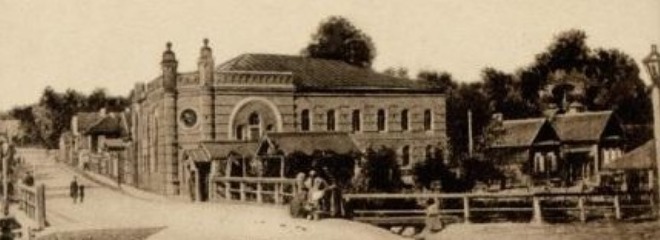Foreword
Dear Reader, we are pleased to introduce you the second part of “The History of Jews in Mogilev: Documents and People.” In the previous volume we dealt with the history of the Jews in Mogilev on the Dnieper from the beginning of the Jewish settlement in the city until the fall of the Russian Empire in 1917. this work has had a wide readership. The book has attracted historians, teachers and students of Jewish and Byelorussian history and culture and amateurs of Jewish genealogy, and it was acquired by national and university libraries in Byelorussia, Russia, Ukraine, Poland, Germany, Israel, England and the United States.
Our current book continues the discourse into the Soviet period until the World War II. In several cases, we trace biographic stories even further, until the second half of the twentieth century. Focusing on the Jews who were a significant part of the Mogilev population, the book in fact tells the story of the city in whole. We also concern the life of Jews in the city’s vicinities, neighboring towns and villages, except for Bobruisk, which large Jewish community deserves especial attention.
Although considerable research was done in general history of the Soviet Jews during the last 15 years, the local histories and biographic studies have many lacunae. This is also true regarding Mogilev, which Jewish community was important one in Byelorussia. A few scholarly publications by Soviet historians on Mogilev of the period since the Revolution of 1917 are ideologically engaged and ignore the Jewish life in the city. Authors of several later articlies are as a rule not familiar with realities of Jewish life or details of the history of Mogilev. As the result, their research suggests too general or even mistaken conclusions. We try to combine the contemporary methodology of historical research with knowledge of Jewish culture and scrutiny of investigations of the local material. Our work is based on the research of rare and old publications, and also hitherto unpublished documents from archives in Mogilev, Minsk and St. Petersburg, museums and private collections. A considerable part of the information was acquired in course of the interviewing of more than 150 witnesses, mostly native residents, but also those living now in Israel, Germany and the USA. Relevant Internet resources were used as well. About 240 photographs, many of which never published before, illustrate our book, completing the textual narration with rich visual evidence.
The beginning of the discussed period is marked by granting the Jews the equal civic rights. This caused a dramatic change in their life. Whereas the discriminative laws of the Tsarist Russia oppressed its Jewish subjects, after the revolutions of 1917 their latent potential brake out and caused considerable achievements. The social and ideological preferences of the Jewish population never were homogeneous. The Jews actively participated in different fields of social life and almost in all, sometimes opposite, the political parties and movements. The book embraces polarities of Jewish life under the Soviet regime: the observance of traditional Judaism versus the official atheist ideology, the private and co-operative business versus the state industry, and the enthusiasm of Communist ideals versus the tragedy of collective repressions. Yet, we feel that what we write on Stalin’s repressions is not but a general outline for further research. Although we are fully aware of the fact that we, as any other historians, are not free from subjectivity, we do our best to give the facts as they, without either advocating or condemning any group or person.
We consciously go in detail much deeper than in the previous volume. On the one hand, we come here to less remote past, much more date on which have survived and even a few eye-witnesses of described events are still alive. On the other hand, a great part of the information is barely available for the wide audience, may stories have been forgotten, and the unwritten personal memoirs go away with their bearers. The book revives many lost names and personal stories. It tells about renowned Jews of Mogilev and traces out their activity in their birthplace and beyond. In additional, we also include stories of simple citizens, even when we cannot delineate them in detail and thus have to interrupt our narration. Our attempt to renascent the past as full as possible in the limits of this single volume may explain the abundance of facts and names, even those that for a glance look negligible. Nevertheless, even such shorts stories and even a single mention of a forgotten person would be most helpful for our readers who seek for their genealogical roots.
We wish you, our dear Reader, to enjoy, as informative as moving reading on the following pages.



